Scandinavian, Minimalist and Industrial Design
Fast Paced Design Trends
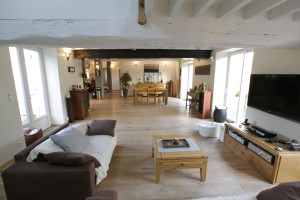 It goes without saying that the internet has revolutionized design concepts. As little as ten years ago, viral trends could take weeks or months to build up to worldwide proportions. Today, ideas can populate from 1 to a million in a matter of hours. This has had some interesting affects on design where “the latest trend” can seem to change everyday. However, it has also created an environment where classic design trends can evolve and new ideas form rapidly through a constant process of regeneration.
It goes without saying that the internet has revolutionized design concepts. As little as ten years ago, viral trends could take weeks or months to build up to worldwide proportions. Today, ideas can populate from 1 to a million in a matter of hours. This has had some interesting affects on design where “the latest trend” can seem to change everyday. However, it has also created an environment where classic design trends can evolve and new ideas form rapidly through a constant process of regeneration.
In a way, it becomes superficial to say that there is any one design of the moment. However, there are a few design trends that have been increasing in popularity over the last few decades which are, in themselves, movements. However, these trends have also simultaneously been incorporated into modern interpretations of classical design styles. Minimalist, open floor plans, and Industrial design are all examples of this phenomenon.
Modern Design is a Scandinavian Tradition
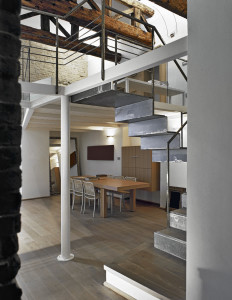 The modern incarnations of minimalism, industrial and open floor plans are highly influenced by traditional Scandinavian design principles. These design trends also fit very neatly into the fast pace of modern life. This is especially true for young professionals that are expected to have significantly more career changes than previous generations. Having to solve budget, spacing and transportation issues can be huge issues for young adults that may need to make several major moves to accommodate shifting career paths. Open floor plans, minimalist and industrial design techniques address many of the problems inherent in this life style.
The modern incarnations of minimalism, industrial and open floor plans are highly influenced by traditional Scandinavian design principles. These design trends also fit very neatly into the fast pace of modern life. This is especially true for young professionals that are expected to have significantly more career changes than previous generations. Having to solve budget, spacing and transportation issues can be huge issues for young adults that may need to make several major moves to accommodate shifting career paths. Open floor plans, minimalist and industrial design techniques address many of the problems inherent in this life style.
Scandinavian designs from Denmark, Switzerland and Finland have been made increasingly popular by retailers like the Swedish owned IKEA®. Simplicity, thrift and functionality are staples of the Scandinavian design culture. Throughout history, these ideas can be seen permeating their architecture, furniture and technology. These countries have had to solve interesting resource issues for centuries and have coincidentally ended up with ideas well suited to the fast paced cultures of younger westernized nations.
Open Floor Plans, Industrial Design and Minimalist Principles
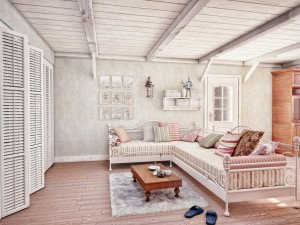 Open floor plans give interiors the feeling of a blank canvas that is defined by the placement of furniture, rather than more permanent fixtures like drywall and doors. This allows property owners to change the look and function of their rooms, without knocking down walls or resorting to other heavier construction methods.
Open floor plans give interiors the feeling of a blank canvas that is defined by the placement of furniture, rather than more permanent fixtures like drywall and doors. This allows property owners to change the look and function of their rooms, without knocking down walls or resorting to other heavier construction methods.
Industrial design creates an interesting and cost effective bond between two seemingly opposing forces: form and function. Utilitarian structures like plumbing, electrical conduits and ventilation ducts are left exposed in order to create ambiance, but this has the added benefit of making these structures easily accessible. It is also cost effective because it makes highly malleable hardware part of the aesthetic design element. Stark looking wood products, metal fixtures, and other building materials often cost less than very purposed furniture, making it great for addressing different issues on a budget. Which, if done correctly, can also double as decorating in the industrial design motif.
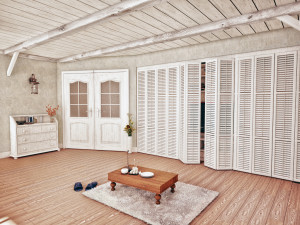 Minimalist principles can be practiced in any design setting, modern or classical. However, minimalism has a special place with open floor plans that incorporate an industrial design. At their core, open floor and modern industrial are already minimalist. However, pulling off these looks without making a property look like a construction zone takes a trained minimalist technique. Exposing too many utilitarian structures can make a room look unfinished instead of cleverly thought out. Using too much un-purposed furniture and/or items can make an open floor plan look like a large room filled with clutter. Minimalism means that every object within a space has very specific form and function.
Minimalist principles can be practiced in any design setting, modern or classical. However, minimalism has a special place with open floor plans that incorporate an industrial design. At their core, open floor and modern industrial are already minimalist. However, pulling off these looks without making a property look like a construction zone takes a trained minimalist technique. Exposing too many utilitarian structures can make a room look unfinished instead of cleverly thought out. Using too much un-purposed furniture and/or items can make an open floor plan look like a large room filled with clutter. Minimalism means that every object within a space has very specific form and function.
Shutters and Modern Design
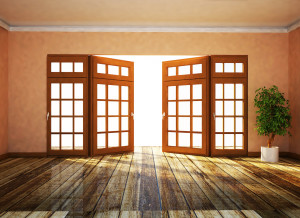 It is perhaps, most conventional to think of shutters as outdoor fixtures, or at least inseparable from windows. Which, given their intended purposes isn’t unreasonable, but modern design has re-purposed shutters for a lot more. Also, these unique fixtures can be incorporated into many classic design schemes, with a less than classic approach. The patterns and lines inherent in shutters can be incorporated into wall decor, shelving or other fixtures in order to draw attention and direct the eye.
It is perhaps, most conventional to think of shutters as outdoor fixtures, or at least inseparable from windows. Which, given their intended purposes isn’t unreasonable, but modern design has re-purposed shutters for a lot more. Also, these unique fixtures can be incorporated into many classic design schemes, with a less than classic approach. The patterns and lines inherent in shutters can be incorporated into wall decor, shelving or other fixtures in order to draw attention and direct the eye.
Faux and interior windows are great ways to take advantage of the linear properties of shutters. If used correctly, both of these fixture types can be used to increase the feeling of spaciousness, while simultaneously reducing negative space. Ironically, it is precisely because the image of blinds is so closely associated with windows and exterior structures that make them so effective at making rooms feel larger because it is far more typical that adding to a room will make a room feel smaller.
In open floor plans, shutters can be great for dividers. Securing them to a floor or wall can create a permanent space in your home. Or, creating a collapsible divider is a convenient way to create space when and where it is needed. Another great benefit of using shutters for dividers is that they can take advantage of light. Whether you are creating a dividing wall, but still want light getting through to other parts of your room, or you’re interested in taking advantage of the light patterns created by the slats, blinds are a design fixture created for light.
If you’re in need of blinds, shutters or design ideas, don’t hesitate to Contact Us. Here at Wasatch Shutter & Design, it is a part of our passion to answer your questions about decoration and design elements. Our team of experts can help you get the right shutters and blinds for your home or business. Whether you’re looking for classic designs that represent tradition, or modern fixtures that demonstrate function, Wasatch Shutter & Design can help you.
